Research Article
Volume 1 Issue 2 - 2018
Evaluation of Clinical Anesthetic Effect After Tramadol Hydrochloride Addition to Xylazine- Ketamine Total Injectable General Anesthesia in Cats Undergoing Scrotal Castration
Department of surgery, anesthesiology and radiology, Faculty of veterinary medicine, Assiut University, New valley, Egypt
*Corresponding Author: Mohamed Wefky El-Sherif, Department of surgery, anesthesiology and radiology, Faculty of veterinary medicine, Assiut University, New valley, Egypt.
Received: August 01, 2018; Published: August 17, 2018
Abstract
Twenty adult male Egyptian local breed cats were divided into two equal groups and anesthetized using two different Ketamine based protocols. The first group received a mixture of Xylazine and Ketamine (XK) in a single syringe administered intramuscular. The other group received Xylazine-Ketamine- Tramadol mixture (XKT) in the same syringe. Non-significant variations in physiological parameters, induction, and anesthesia or recovery periods were detected. Post-operative sedation and analgesia significantly increased in the XKT group. Seizures like convulsions were noticed during induction and recovery in XKT group. Anesthesia and recovery periods were slightly prolonged in the same group than in XK group. In conclusion, addition of tramadol in a dose of 2mg/kg to Xylazine-Ketamine combination didn’t depress the cardiopulmonary functions hence didn’t require further addition of anticholinergic premedication, produced better sedation and post-operative analgesia and slightly prolong the anesthesia duration.
Keywords: Anesthesia; Cat; Ketamine; Tramadol; Xylazine
Introduction
Injectable agents are very common for induction and/or maintenance of general anesthesia in cats. Alpha2 (α2) adrenoceptor agonist-ketamine combination is one of the most common injectable anesthetic protocols for achieving general anesthesia in cats (Neven, 2013). Xylazine hydrochloride is a α2 adrenoceptor agonist widely used in cats for its sedative, analgesic and muscle relaxant effects (Pypendop, 2005). Xylazine combined with Ketamine to increase its anesthetic and analgesic effects and to reduce the dose required to induce satisfactory anesthesia. However, its use is associated with adverse effects including bradycardia and respiratory depression (Lemke, 2004; Pypendop, 2005). Ketamine hydrochloride is a dissociative anesthetic with central sympathomimetic activity when used alone it tends to poor muscle relaxation and persistent pain reflex. The muscle twitching and rigidity and convulsive seizures are centrally mediated. Ketamine produces a dose dependent depression of Cardiac function (Pratila and Pratila, 1978). Tramadol hydrochloride is a centrally acting analgesic that is structurally related to codeine and morphine (Shilo., et al. 2008). It acts as a weak m-opioid agonist coupled with inhibition of synaptic reuptake of serotonin and norepinephrine, achieving spinal modulation of pain and preventing impulses reaching the brain (Kongara., et al. 2009). It had been used in several species, including cats (De Sousa., et al. 2008; Paulo; Steagall, 2008). It was hypothesized that tramadol in combination with XK will provide extra depth and duration of analgesia than XK alone. The aim of this study was to Judge the effect of adding tramadol HCL in a dose of 2mg/kg to xylazine ketamine combination and to evaluate XKT combination analgesic effect and its effect on depth and duration of anesthesia.
Materials and Methods
Twenty adult healthy male cats (aged from 2-4 years and weighting from 3-4.200kg) were participated this clinical study. Cats were caught with assistance of the owner and weighted with an electronic scale. Essential physiological parameters such as rectal temperature, heart rate and respiratory rate were collected and documented for each cat in a separate monitoring sheet. Cats were randomly allocated in two groups. Food was withheld 8 hours and water two hours prior the experiment. The first group (XK group) contained 10 cats received xylazine (Xylaz, Farvet, Holland) and ketamine (ketamine 100, Pantex, Holland) 1mg/kg and 10mg/kg respectively mixed in a single syringe and injected intramuscularly. The other group (XKT group) contained 10 cats and received a combination of xylazine 1mg/kg, ketamine 10mg/kg and tramadol 2mg/kg (Tramal 100, GRUNENTHAL, Germany) mixed in a single syringe and administered by intramuscular rout. All participated cats underwent open surgical castration.
The time of administration was marked as (time 0), physiological variables were collected within 10 minutes’ interval (10m, 20m, 30m, 40m, 50m and 60m). After immobilization animals were placed in right lateral recumbence, surgically prepared and draped for castration procedure. Eye ointment (Oxypol, EIPICO, and Egypt) was used to protect eye against dryness. Sedation, analgesia, muscle relaxation, vomiting, excitement and apnea were recorded and evaluated in each time according to scales in Table 1. And recorded in monitoring sheet. Monitoring sheet is written in time lined manner.
| Criteria | Score | Observation |
| Sedation score [evaluated by degree of immobilization, calmness, disappearance of reflexes and consciousness] |
0 | No sedation |
| 1 | Mild sedation | |
| 2 | Moderate sedation | |
| 3 | Profound sedation | |
| Analgesia score [evaluated via needle break at whole body and sensitive areas as interdigital space and scrotum] |
0 | No analgesia [poor] |
| 1 | Mild analgesia | |
| 2 | Moderate analgesia | |
| 3 | Profound analgesia [excellent] | |
| Muscle relaxation score [evaluated by degree of easiness of mouth opening and degree of hind limb flexion] |
0 | Mouth can’t be opened |
| 1 | Mouth can open with resistance | |
| 2 | Mouth opens with little effort | |
| 3 | Mouth opens and limb moves without resistance. | |
| Criteria | Reference* | Observation |
| Rectal temperature | 38.1-39.2o | Measured by electronic thermometer |
| Heart rate | 120-140 | Measured at the ventrolateral aspect of the thorax by stethoscope in one minute. |
| Respiratory rate | 16-40 | Measured by thoracic and abdominal movements in one minute. |
Table 1: The criteria used to evaluate the anesthetic effect in both (XK) and (XKT) groups.
Induction time of anesthesia, time to elapse stage of anesthesia, duration of anesthesia, duration of analgesia and recovery times were recorded. Statistical analysis was performed using SPSS v.18 and Mann-Whitney’s test for non-parametric values.
Results
After intramuscular administration, cats showed signs of dissociative anesthesia characterized by open eye, mydriasis, mouth movement and licking of the nose. Cats in both groups became laterally recumbent within five to eight minutes. Recovery in XK group was characterized by slow movements of the eyes, twitching of the ears and attempts to lift the head and to stand on the fore feet. Colonic convulsions were recorded in four cats during induction with XKT combination. One cat of the four and two others showed convulsions during recovery. Convulsions were characterized by rigid open mouth, twitches and rigidity of the four limbs and rigidity of abdominal muscles. Induction with XKT combination administered intramuscular in the thigh muscles was also characterized by slow onset, animal stands or moves on its fore feet and drag the hind quarter which looks like paralyzed. Induction, anesthesia and recovery times are illustrated in Table 2.
| Regimen | Induction | Anesthesia* | Recovery |
| Xylazine-Ketamine (XK) | 3.25 ± 0.24 | 45.16 ± 8.77 | 11.26 ± 5.64 |
| Xylazine-Ketamine-Tramadol (XKT) | 3.54 ± 0.18 | 49.48 ± 11.46 | 9.19 ± 2.89 |
Table 2: Induction, anesthesia and recovery periods calculated in minutes.
Anesthesia and recovery times were significantly longer using XKT combination compared to XK mixture; induction time was not significantly different between two treatments. Vomiting was recorded in two cases in XK group, excitement was recorded in six cats of XKT group, temporary apnea was observed in two cats in XK group during anesthesia stage. Abnormal behavior was not observed in any of the cats during or after anesthesia. In the XKT group, animals were more conscious during recovery. They make several attempts to raise head and steer, stand with the fore feet or vocalize. Ataxia and uncontrolled manners were rarely observed during recovery in XK group. There was no significant difference in physiological variables between the two different protocols Table 3. Sedation, analgesia and muscle relaxation scores were recorded in Table 4.
| Rectal temperature (°C) | |||||||
| 0 min. | 10 min. | 20 min. | 30 min. | 40 min. | 50 min. | 60 min. | |
| XK | 38.9 ± 0.45 | 38.7 ± 0.1 | 38.6 ± 0.2 | 38.5 ± 0.4 | 38.1 ± 0.1 | 37.9 ± 0.4 | 37.8 ± 0.2 |
| XKT | 38.8 ± 0.53 | 38.6 ± 0.4 | 38.4 ± 0.2 | 38.1 ± 0.2 | 37.9 ± 0.2 | 37.8 ± 0.5 | 37.9 ± 0.3 |
| Heart rate (B/min) | |||||||
| XK | 117 ± 10 | 133 ± 11 | 129 ± 16 | 124 ± 12 | 120 ± 13 | 114 ± 12 | 122 ± 13 |
| XKT | 118 ± 10 | 135 ± 10 | 130 ± 11 | 125 ± 12 | 120 ± 11 | 112 ± 10 | 119 ± 9 |
| Respiratory rate (B/min) | |||||||
| XK | 22 ± 2 | 29 ± 8 | 25 ± 4 | 23 ± 1 | 25 ± 2 | 23 ± 1 | 23 ± 2 |
| XKT | 23 ± 1 | 30 ± 5 | 26 ± 4 | 24 ± 3 | 24 ± 4 | 24 ± 2 | 24 ± 1 |
Table 3: Variations in physiological parameters.
| Sedation | |||||||
| Regimen | 0 min. | 10 min. | 20 min. | 30 min. | 40 min. | 50 min. | 60 min. |
| XK | 0 | 2 ± 6 | 2.2 ± 0.45 | 1.9 ± 0.27 | 1.7 ± 0.66 | 1.1 ± 0.42 | 0.35 ± 0.71 |
| XKT | 0 | 1.9 ± 2 | 2 ± 0.66 | 1.7 ± 0.61 | 1.5 ± 0.54 | 1.4 ± 0.44 | 1.1 ± 0.45 |
| Analgesia | |||||||
| XK | 0 | 2.9 ± 0.25 | 3 ± 0.36 | 2.8 ± 0.54 | 2.2 ± 0.71 | 1.8 ± 0.32 | 0.5 ± 0.45 |
| XKT | 0 | 2.6 ± 0.45 | 2.8 ± 0.45 | 2.7 ± 0.21 | 2.5 ± 0.14 | 2.5 ± 0.01 | 1.8 ± 0.96 |
| Muscle relaxation | |||||||
| XK | 0 | 3 ± 0.45 | 3 ± 0.11 | 3 ± 0.64 | 2.8 ± 0.11 | 2.7 ± 0.96 | 1.75 ± 0.75 |
| XKT | 0 | 2.8 ± 0.56 | 3 ± 0.55 | 2.7 ± 0.51 | 2.5 ± 0.50 | 1.75 ± 0.87 | 0.9 ± 0.54 |
Table 4: Sedation, analgesia and muscle relaxation parameters.
Discussion
Both Xylazine-Ketamine and Xylazine-Ketamine-Tramadol cocktails produced adequate general anesthesia for the procedures. Non-significant differences were detected in induction time for both groups. The induction time average was about 3 minutes, likewise previous reports of Chen and Chee (2005) and Li., et al. (2013). In contrast to results reported by Li., et al. (2013), xylazine-ketamine-tramadol resulted in longer induction period than Tiletamine/zolazepam-xylazine-tramadol combination. Recovery period was longer when Xylazine was mixed with ketamine and Tiletamine/zolazepam scored by Chen and Chee (2005), while, in the present study recovery period was very short and scored about 10 minutes. The former result is most likely due to the excitatory effect of both tramadol and ketamine. Physiological parameters didn’t score any significant variation between the two groups, which suggests that tramadol produces little or no cardiopulmonary depressing effect that make it possible to use the combination without anticholinergic premedication. Anesthesia lasted for about 45 minutes in xylazine ketamine group. This result was close to that recorded by Li., et al. (2013). Longer anesthesia period was noted in the xylazine-ketamine-tramadol group. Also, it was longer than produced by xylazine-ketamine- tiletamine/zolazepam Chen and Chee (2005) and Li., et al. (2013).
Sedation was not significantly differed between the two groups. But, addition of tramadol increased significantly the duration of analgesia. These results were well-matched with using of tramadol in other combinations reported by Chen and Chee (2005) and Li., et al. (2013) and also supported by the recorded analgesic effect of solely used tramadol reported by (Beatriz., et al. 2017). Muscle tremors and convulsions were recorded preoperatively in 4 cats and postoperatively in 3 cats, this is likely to be due to presentation of serotonin like effect of both tramadol and ketamine during induction and recovery (Indrawirawan and McAlees, 2014; Kurdi., et al. 2017).
The present study showed that xylazine-ketamine combination associated with tramadol caused adequate immobilization characterized by rapid induction, adequate analgesia and a state of balanced anesthesia sufficient for short to medium surgical procedure with a single complication which is convulsion or seizures that may arise in some cases. Regarding this result, further studies on using other sedative-muscle relaxing anti-convulsant agents like diazepam or midazolam may be tested for controlling this complication.
Acknowledgement
I would like to thank miss. Gusfik Ahmed, for allowing the mass castration of tom cats she owns, facilities she offered during the period of the study, the operating theater she founded in her own home and for assisting me by recording the physiological parameters of cats during the study.
I would like to thank miss. Gusfik Ahmed, for allowing the mass castration of tom cats she owns, facilities she offered during the period of the study, the operating theater she founded in her own home and for assisting me by recording the physiological parameters of cats during the study.
References
- Neven EC Project Tutors of Utrecht University, Faculty of Veterinary Medicine, Department of Clinical Sciences of Companion Animals (2013).
- Lemke KA. “Perioperative use of selective alpha-2 agonists and antagonists in small animals”. Canadian Veterinary Journal 45.6 (2004): 475-480.
- Shilo Y., et al. “Pharmacokinetics of tramadol in horses after intravenous, intramuscular and oral administration”. Journal of Veterinary Pharmacology and Therapeutics 31.1 (2008): 60-65.
- Kongara K., et al. “Glomerular filtration rate after tramadol, parecoxib and pindolol following anaesthesia and analgesia in comparison with morphine in dogs”. Veterinary Anaesthesia and Analgesia 36.1 (2009): 86-94.
- De Sousa., et al. “Pharmacokinetics of tramadol and O- desmethyltramadol in goats after intravenous and oral administration”.Journal of Veterinary Pharmacology and Therapeutics 31.1 (2008): 45-51.
- Paulo VM., et al. “Antinociceptive effects of tramadol and acepromazine in cats”. Journal of Feline Medicine and Surgery 10.1 (2008): 24-31.
- Pratila MG and Pratilas V. “Anesthetic agents and cardiac electromechanical activity”. Anesthesiology 49.5 (1978): 338-360.
- Fielder Susan E. Reference guides in: MSD veterinary manual. Merck & Co., Inc., Kenilworth, NJ, USA (2016).
- Pypendop B. Alpha-2 adrenoceptor agonists in dogs and cats. In: 50° Congresso Nazionale Multisala SCIVAC, 2005 – Rimini, Italia. Published by IVIS (2005).
- Li L., et al. “Effects of tramadol with tiletamine/zolazepam- xylazine as anaesthesia in cats”.Acta Veterinaria 82.2 (2013): 219-223.
- Chen HC and Chee SK. “Anesthetic effects of xylazine combinations in high and low concentrations of tiletamine-zolazepam, with and without ketamine, in cats”. Jurnal Veterinar Malaysia 17.2 (2005): 13-18.
- Indrawirawan Y and McAlees T. “Tramadol toxicity in a cat: case report and literature review of serotonin syndrome”. Journal of Feline Medicine and Surgery 16.7 (2014): 572-578.
- Beatriz P Monteiro., et al. “Analgesic efficacy of tramadol in cats with naturally occurring osteoarthritis”. Plos One 12.4 (2017): 0175565.
- Kurdi M S., et al. “Ketamine: A Convulsant?” Anesthesia: Essays and Researches 11.1 (2017): 272-273.
Citation:
Mohamed Wefky El-Sherif. “Evaluation of Clinical Anesthetic Effect After Tramadol Hydrochloride Addition to Xylazine-
Ketamine Total Injectable General Anesthesia in Cats Undergoing Scrotal Castration”. Anaesthesia, Critical Care and Pain Management
1.2 (2018): 98-102.
Copyright: © 2018 Mohamed Wefky El-Sherif. This is an open-access article distributed under the terms of the Creative Commons Attribution License, which permits unrestricted use, distribution, and reproduction in any medium, provided the original author and source are credited.











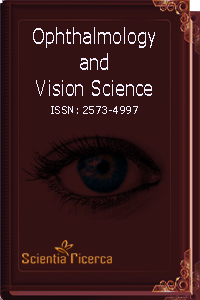
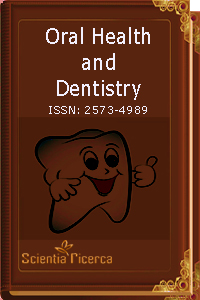
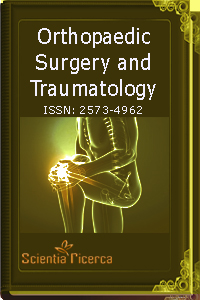
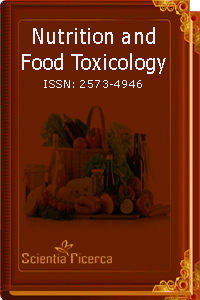
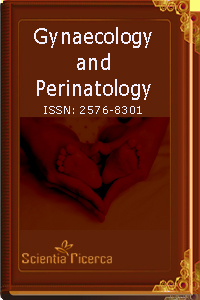
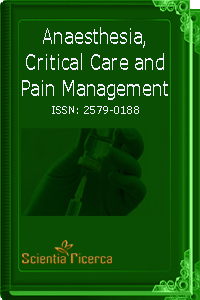
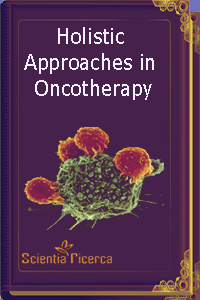
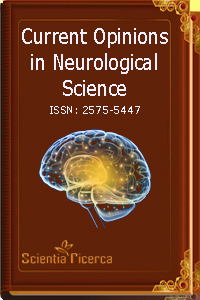
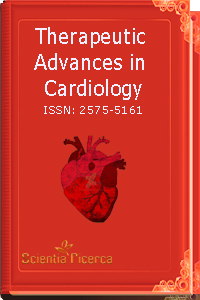
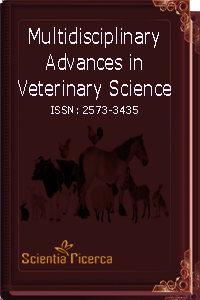
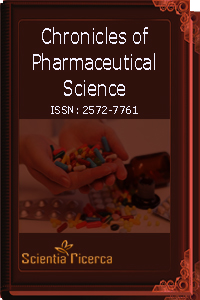
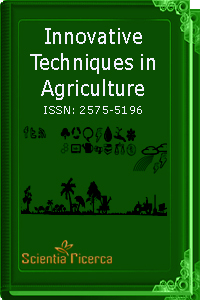
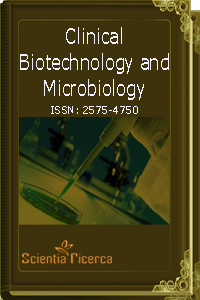
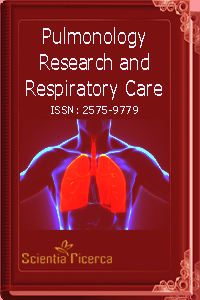
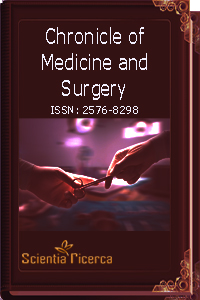
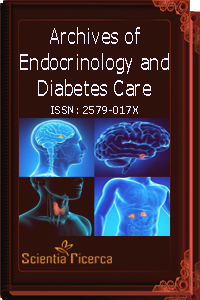
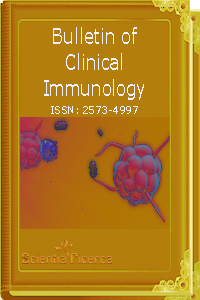
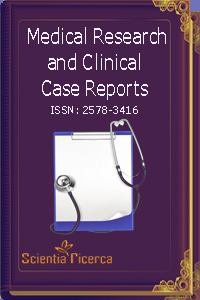
 Scientia Ricerca is licensed and content of this site is available under a Creative Commons Attribution 4.0 International License.
Scientia Ricerca is licensed and content of this site is available under a Creative Commons Attribution 4.0 International License.